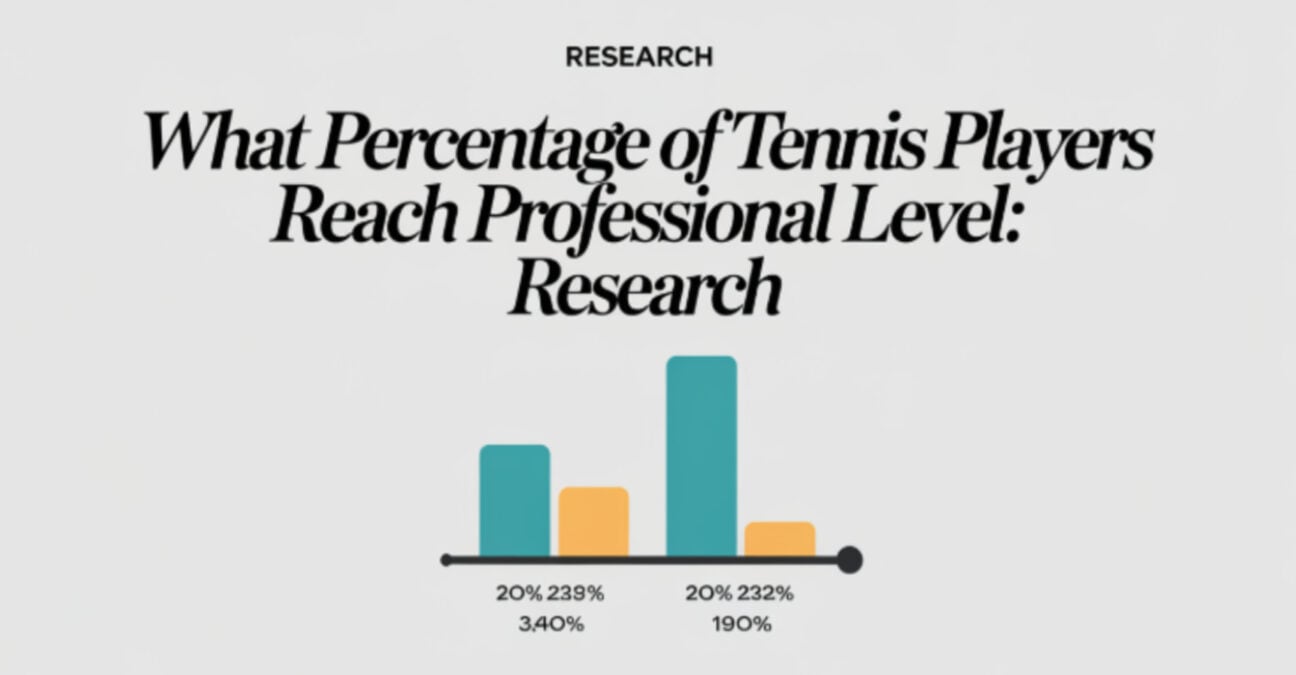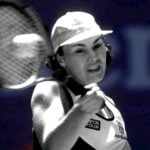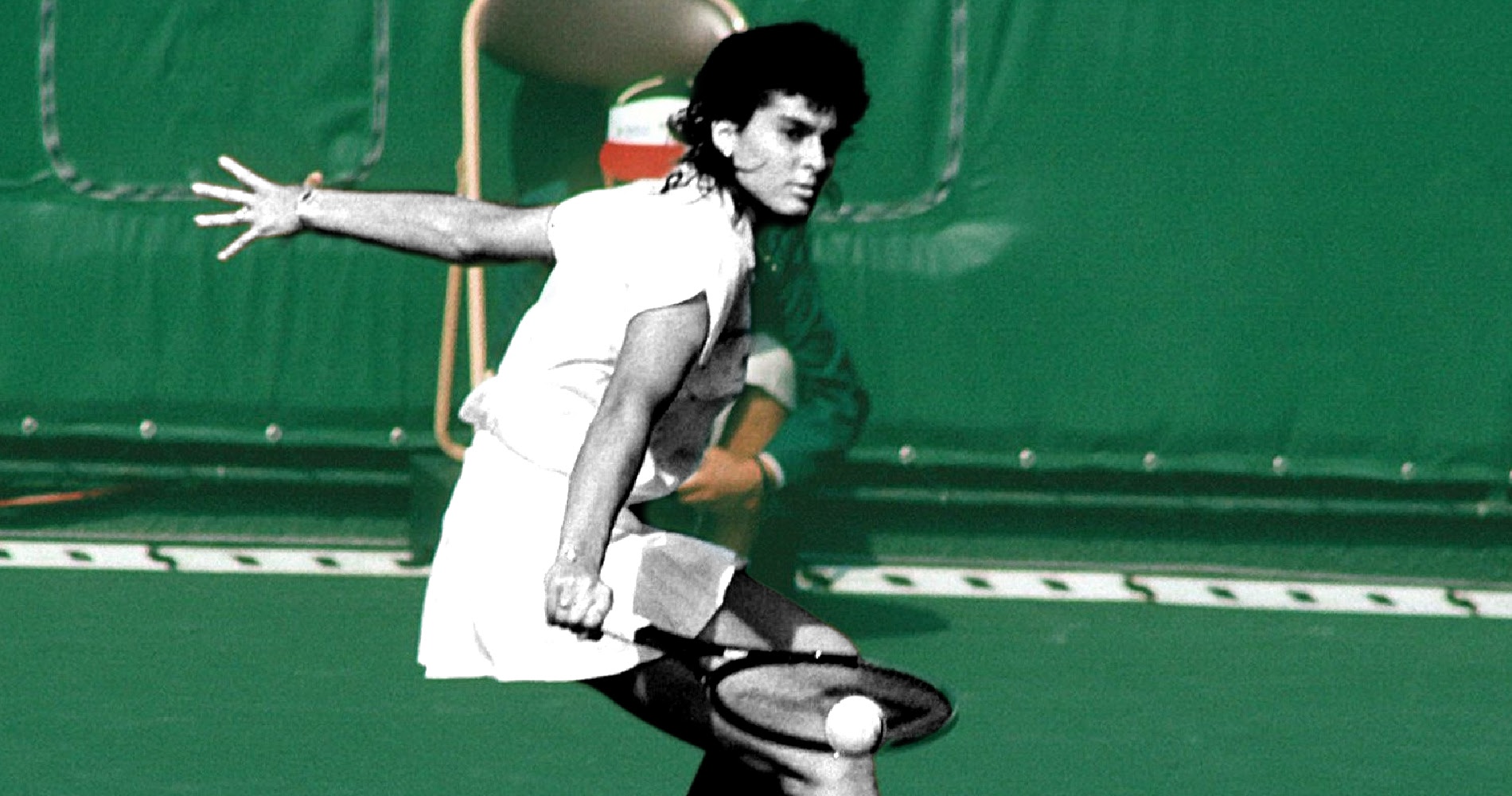What percentage of tennis players reach professional level: Research
Discover the real statistics on tennis players turning professional: Research-based analysis of success rates, barriers, and pathways from junior to pro tennis
 What percentage of tennis players reach professional level: Research
What percentage of tennis players reach professional level: Research
Every young tennis player has dreamed of going pro—picturing themselves lifting trophies, rising through the ATP or WTA rankings, and joining the elite circle of tennis stars. Whether it is a kid smacking balls off the garage or a teen battling through junior tournaments, the dream always feels within reach.
Parents buy in too, pouring money into elite tennis academies and intense training programs, hoping for a tennis scholarship or a legitimate shot at a professional tennis career. But here’s the harsh reality: less than 1 percent of tennis players ever make it. The statistics are brutal, with a success rate in sports that’s worse than nearly any other pro path.
The chances of becoming a professional are so slim that it is more like gambling than a sport. From local courts to national qualifying tournaments, this path is fraught with burnout, empty bank accounts and dreams that never come true. Sites like slotsspot.com often draw comparisons between the odds in sports and gambling, and in tennis, that comparison hits uncomfortably close to home.
From Weekend Warriors to Tournament Machines
The pyramid for tennis players is absolutely insane when you break it down. At the bottom, you’ve got millions of recreational players who just love hitting balls and staying fit, completely oblivious to the competitive world above them.
Then you get to the juniors who start showing up at local tournaments and suddenly parents are talking about future stars and looking up to elite tennis academies online like they are shopping for college. The transition from casual tennis players to serious competitors happens fast and that is where the first reality check hits like a freight train.
Junior tennis players, who dominate their local scene, often get their heads handed to them at regional events, and those who survive regionals get crushed at nationals. The tennis dropout rate begins to shoot up here because parents and kids realise that being the best player at the country club means absolutely nothing in the bigger picture. Only the most dedicated players make it through this gauntlet to fancy a pro career.
The Numbers Game That Crushes Dreams
Hold onto your hats because these statistics are going to blow your mind. Out of nearly 87 million tennis players worldwide, fewer than 10,000 have any kind of professional ranking worth mentioning.
That is about 0.01% for those keeping track at home. The success rate in sports for tennis makes other sports look like participation trophy events. Juniors face even worse odds, with probably 1 in 10,000 ever cracking the top 500 in ATP ranking or the WTA ranking. The dropout rate is absolutely savage during the junior-to-pro transition, where reality meets fantasy head-on.
Most players and their families do not understand these numbers until they’ve already invested years and thousands of dollars chasing a professional career. The pro sports odds are so stacked against success that even players ranked in the top 200 worldwide often struggle to make ends meet. The tennis development pathway eliminates more dreams than it fulfils, and that is just the cold, hard truth about this sport.
Training Like Your Life Depends on It
The training demands for serious tennis players are absolutely bonkers. We are talking six to eight hours a day, seven days a week, with training programs that would make Navy SEALs think twice.
Elite academies charge more than most people’s annual salaries, and that’s just for the privilege of having your kid train alongside other future stars who might also never make it professionally. Juniors, who are serious about turning pro, basically give up their childhood for the sport. No sleepovers, no school parties, no normal teenage experiences because every weekend is tournament time and every weekday is training day.
The physical demands are crushing, but the mental pressure is worse. Parents spend mortgage payments on training programs while their kids miss out on being regular teenagers. Most players who go through this grinder don’t even make it to college tennis, let alone professional levels.
The Barriers That Kill Professional Dreams
Money is the biggest dream killer for aspiring tennis players. The costs are absolutely insane: coaching, travel, equipment, tournament fees, and elite academies that charge premium prices for producing one professional player out of hundreds.
Junior tennis players from middle-class families get priced out of the development pathway before they even know what hit them. But it is not just about money. The dropout rate spikes because of injuries, burnout, and the realisation that talent alone isn’t enough.
Tennis players need perfect storm conditions: genetic gifts, financial resources, mental toughness, injury-free development, and family support that borders on obsession. One piece missing, and the professional dream collapses like a house of cards. Most players and their families do not realise how many things need to align until something goes wrong.
Alternative Paths That Actually Make Sense
Here’s where smart tennis players and families start thinking outside the traditional box. College tennis and tennis scholarship opportunities provide realistic pathways for talented players who are not destined for the ATP or WTA glory.
Scholarship programs can cover college costs while players continue to develop their skills and get an education that actually guarantees career prospects. The tennis industry itself offers tons of opportunities for players who understand the game but aren’t going to make it as touring professionals.
Coaching, facility management, sports psychology, journalism and equipment development—all need people who understand the sport from the inside. Many former competitive players build successful careers in these areas while staying connected to the sport they love. The smartest players start considering these alternatives early instead of waiting until their professional dreams crash and burn.
The Tennis Players Elimination Pyramid: From 87 Million to 200 Winners
| Tennis Development Stage | Number of Players | Success Rate to Next Level | Annual Cost Range | What Actually Happens |
| Recreational Players | ~87 million worldwide | 5% become competitive | $200–$2,000 | Weekend warriors having fun |
| Junior Tournament Players | ~4 million globally | 10% reach national level | $15,000–$50,000 | Reality check hits hard |
| National Level Juniors | ~400,000 worldwide | 25% get tennis scholarship | $50,000–$100,000 | College tennis becomes the goal |
| College Tennis Players | ~23,000 in US | 5% attempt professional | $0–$70,000 (with scholarship) | Education becomes priority |
| Professional Ranked | ~10,000 globally | 20% make living wage | $75,000–$500,000+ | Most still lose money |
| Top 500 ATP/WTA | 1,000 total | 50% earn consistent profit | $200,000–$2M+ | Finally making real money |
| Top 100 (Elite) | 200 total | 95% are financially successful | $500,000–$50M+ | The dream realised |
Conclusion
The bottom line for tennis players dreaming of professional careers is harsh but necessary: less than 0.01 percent ever make it to meaningful professional levels and even fewer sustain careers that pay living wages. Junior players and their families need to understand these pro sports odds before investing life savings and childhood years chasing rankings that probably won’t materialise. The tennis development pathway is designed to eliminate players at every level, not nurture them toward success.











